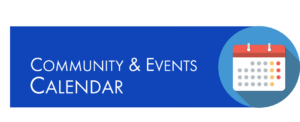STC Community & Events Calendar
The STC Community & Events Calendar is a publicly visible, shared community Google calendar. Community leaders are encouraged to share public STC chapter events on the event calendar. Anybody with a Google account can subscribe to the STC event calendar and see it in their own personal Google calendar.
Subscribe to the Event Calendar (All Members)
Anybody with a Google account can subscribe to the STC event calendar and see it in their own personal Google calendar. Subscribing lets you add the event calendar to your list of Google available calendars.
To subscribe to the event calendar:
- Sign into your Google account on your browser.
- Click this link: Events Calendar.
- Click Add to add the event calendar to your personal Google calendar.
Alternatively, open the calendar and click the plus sign icon in the lower right corner to subscribe. The calendar appears under the Other Calendars list in your Google Calendar.
Add an Event
If you have posting permissions, you can add an event to the Google calendar just like you would in your own personal google calendar.
- Open the Google Calendar associated with the account that has posting access.
- On the calendar, go to the day of your event.
- Click on the day in the calendar to open a new event entry.
- Fill out the event entry form. For assistance, refer to Google’s Create an event in a shared calendar article.
-
- You must confirm that you are saving your event to the shared STC Events calendar, as described in the linked Google article.
- Be sure to set the appropriate time zone for your event. By default, the event calendar uses Universal Coordinated Time.
You can also copy an event from your chapter’s calendar to STC’s event calendar by following the steps Google’s Copy an event to another calendar article.
Add an Event to the Event Calendar (Chapter Leadership)
STC grants access to chapter leadership to post to the STC events calendar. You must first request this permission. Then, you can follow the steps to post events to the calendar.
Best Practices for Adding an Event
- In the Title field, use the format [Event Title – Chapter Name].
- In the Location field, add the URL of the landing page for your event.
Embed the Event Calendar in Your Community Website
To embed the STC events calendar on your website, follow the steps in the Add a Google calendar to your website article.
Request Posting Permissions
If you don’t already have posting permissions, you can request them using a Google account specific to your chapter rather than a personal Gmail account.
To request posting permissions, send an email to the events calendar administrator from your chapter-specific account and indicate that your chapter-specific account needs posting permissions.
